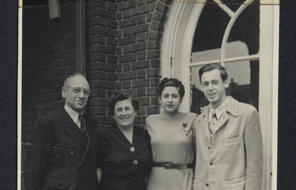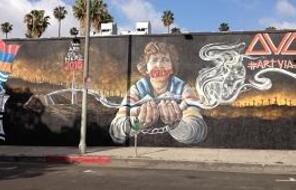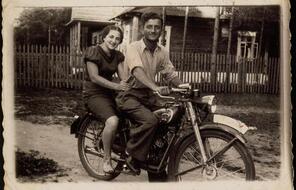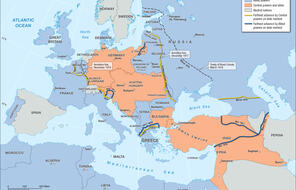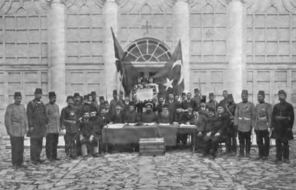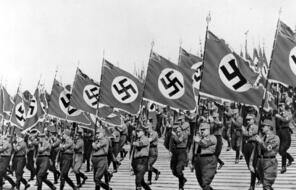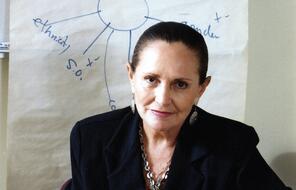Inventing Black and White
At a Glance
Language
English — USSubject
- Civics & Citizenship
- History
- The Holocaust
- Human & Civil Rights
Race: The Power of an Illusion (The Story We Tell)
In Virginia in the 1600s, Anthony Johnson secured his freedom from indentured servitude, acquired land, and became a respected member of his community. Elizabeth Key successfully appealed to the colony’s legal system to set her free after she had been wrongfully enslaved. By the 1700s, the laws and customs of Virginia had begun to distinguish black people from white people, making it impossible for most Virginians of African descent to do what Johnson and Key had done.
Bacon's Rebellion
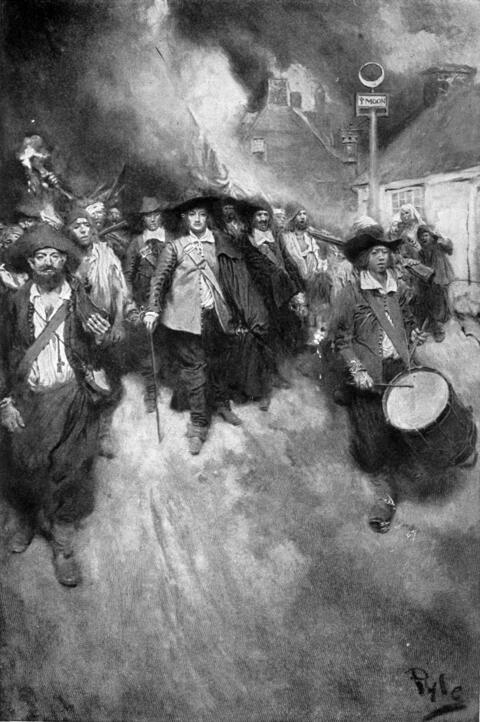
Bacon's Rebellion
This 1905 painting by Howard Pyle depicts the burning of Jamestown in 1676 by black and white rebels led by Nathaniel Bacon.
Why did Virginia lawmakers make these changes? Many historians point to an event known as Bacon’s Rebellion in 1676 as a turning point.
Nathaniel Bacon was a wealthy white property owner and relative of Virginia’s governor, William Berkeley. But Bacon and Berkeley did not like each other, and they disagreed over issues pertaining to how the colony should be governed, including the colony’s policy toward Native Americans.
Bacon wanted the colony to retaliate for raids by Native Americans on frontier settlements and to remove all Native Americans from the colony so landowners like himself could expand their property. Berkeley feared that doing so would unite all of the nearby tribes in a costly and destructive war against the colony.
In defiance of the governor, Bacon organized his own militia, consisting of white and black indentured servants and enslaved black people, who joined in exchange for freedom, and attacked nearby tribes. A power struggle ensued with Bacon and his militia on one side and Berkeley, the Virginia House of Burgesses, and the rest of the colony’s elite on the other. Months of conflict followed, including armed skirmishes between militias. In September 1676, Bacon’s militia captured Jamestown and burned it to the ground.
Although Bacon died of fever a month later and the rebellion fell apart, Virginia’s wealthy planters were shaken by the fact that a rebel militia that united white and black servants and slaves had destroyed the colonial capital. Legal scholar Michelle Alexander writes:
The events in Jamestown were alarming to the planter elite, who were deeply fearful of the multiracial alliance of [indentured servants] and slaves. Word of Bacon’s Rebellion spread far and wide, and several more uprisings of a similar type followed. In an effort to protect their superior status and economic position, the planters shifted their strategy for maintaining dominance. They abandoned their heavy reliance on indentured servants in favor of the importation of more black slaves. 1
After Bacon’s Rebellion, Virginia’s lawmakers began to make legal distinctions between “white” and “black” inhabitants. By permanently enslaving Virginians of African descent and giving poor white indentured servants and farmers some new rights and status, they hoped to separate the two groups and make it less likely that they would unite again in rebellion. Historian Ira Berlin explains:
Soon after Bacon's Rebellion they increasingly distinguish between people of African descent and people of European descent. They enact laws which say that people of African descent are hereditary slaves. And they increasingly give some power to independent white farmers and land holders . . .
Now what is interesting about this is that we normally say that slavery and freedom are opposite things—that they are diametrically opposed. But what we see here in Virginia in the late 17th century, around Bacon's Rebellion, is that freedom and slavery are created at the same moment. 2
According to the Oxford English Dictionary, the first appearance in print of the adjective white in reference to “a white man, a person of a race distinguished by a light complexion” was in 1671. Colonial charters and other official documents written in the 1600s and early 1700s rarely refer to European colonists as white.
As the status of people of African descent in the British colonies was challenged and attacked, and as white indentured servants were given new rights and status, the word white continued to be more widely used in public documents and private papers to describe the European colonists. People of European descent were considered white, and those of African descent were labeled black. Historian Robin D. G. Kelley explains:
Many of the European-descended poor whites began to identify themselves, if not directly with the rich whites, certainly with being white. And here you get the emergence of this idea of a white race as a way to distinguish themselves from those dark-skinned people who they associate with perpetual slavery. 3
The division in American society between black and white that began in the late 1600s had devastating consequences for African Americans as slavery became an institution that flourished for centuries. Lawyer and civil rights activist Bryan Stevenson explains:
[S]lavery deprived the enslaved person of any legal rights or autonomy and granted the slave owner complete power over the black men, women, and children legally recognized as property . . .
American slavery was often brutal, barbaric, and violent. In addition to the hardship of forced labor, enslaved people were maimed or killed by slave owners as punishment for working too slowly, visiting a spouse living on another plantation, or even learning to read. Enslaved people were also sexually exploited. 4
Leaders and scientists from the United States and around the world would increasingly rely on the supposed differences between the black and white races to justify the brutal and inhuman treatment of slaves.
Connection Questions
- Why was Bacon’s Rebellion a turning point for the status and rights of people of African descent in Virginia?
- What motivated Virginia’s lawmakers to make legal distinctions between white and black inhabitants? What effect did those distinctions have on Virginia’s universe of obligation? Can laws influence the way people think about who belongs and who does not?
- What does Ira Berlin mean when he says that freedom and slavery were created at the same moment? How does creating an “out” group strengthen the identity and status of the “in” group?
- In the documentary Race: The Power of an Illusion, historian Mia Bay says that “part of where the idea of race comes from [is] in the tendency for people to see existing power relationships as having some sort of natural quality to them.” What does she mean? Why would people of European descent in the late 1600s begin to believe that people of African descent were naturally or biologically inferior to them? What role might economics have played in encouraging this belief? What role might have been played by the insecurity some felt about their social status?
- How does the history of Bacon’s Rebellion complicate your understanding of the history of racism and slavery in North America? What does this story, along with the stories of Anthony Johnson and Elizabeth Key (see reading, We and They in Colonial America), suggest about the concept of “race”?
- 1Michelle Alexander, The New Jim Crow: Mass Incarceration in the Age of Colorblindness, rev. ed. (New York: The New Press, 2013), 24.
- 2Ira Berlin, interview, Race: The Power of an Illusion (California Newsreel, 2003), accessed March 21, 2016.
- 3Robin D. G. Kelley, interview, Race: The Power of an Illusion, Episode 2: “The Story We Tell” (California Newsreel, 2003), accessed February 17, 2016.
- 4“Slavery to Mass Incarceration,” YouTube video, posted by Equal Justice Initiative, July 7, 2015, accessed February 26, 2016.
How to Cite This Reading
Facing History & Ourselves, "Inventing Black and White," last updated August 2, 2016.





